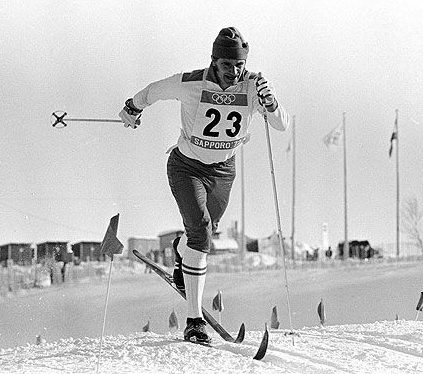- Next presentation is on Monday 4.27. That's Team 3--Sports During the Pandemic.
- After that, Team 5 and 6 both present on Wednesday 4.29.
- Please respond to the emails I sent to Teams 5 and 6.
###
Jane English
- published in 1978, a few years after Title IX
- she died in a mountain climbing accident the same year
- so no reply to critics
Background assumptions
- she assumes female athletic disadvantage: "There are physiological differences between the sexes that are relevant to sports performance." (p. 355)
- women are underrepresented in sport at all levels
- All individuals, regardless of gender, should have equal chances to acquire the basic benefits of sport, which are: teamwork, character, health, self-respect, fun.
- Women as a group and men as a group should have the same chance to acquire the scarce benefits of sport, which are: prizes, records, wins, fame, income, etc.
Note: she is not saying this is the right approach to equal opportunity in all areas of life.
How to achieve equal access to the basic benefits of sport for all individuals, regardless of gender?
- She doesn't say much about this.
- Perhaps what she has in mind is PE for everyone in K-12.
How to achieve equal access to the scarce benefits of sports for women as a group? Three-step recipe.
- Gender-integrate those sports in which abilities are not very different--"dressage, riflery and car racing" (p. 357). Flick Haigh article.
- A. Gender-segregate most sports; after all, if they were integrated, most women would be excluded. As a result, women as a group would suffer loss of self-respect. B. Give equal treatment to women's sports.
- Develop new sports in which women are better than men, so that women can be "best" and not just "best woman"; this would enhance self-respect in women as a group even more than segregated sports.
###
Pam Sailors' Response (2014)
- She's the author of the article on cheerleading that said it's not a sport
- We read her article on climbing, in which she differentiated summitteers and mountaineers.
Her objections
Objection 1--No evidence that sports have any impact on self-respect for the women as a group (as opposed to female athletes)
Objection 2--Segregating by gender doesn't enhance self-respect
Objection 3--New sports won't help, because people don't want to watch them, have less respect for them.
DISCUSSION
The rest of Sailors' points
###
DISCUSSION
- Discuss the three questions below about English's 3-step recipe for achieving equal access to the scarce benefits of sport for women as a group.
- Discuss for 10 minutes. Pick a spokesperson to tell the whole class the group's thoughts on these three questions.
- Step one. Do you agree that some sports should be gender-integrated? Is race-car driving such a sport, as Flick Haigh says?
- Step two. Do you agree that gender segregation of sport is necessary for the self-respect of women as a group? Or do you sympathize with Pam Sailors' skepticism about this? Another issue: are there better reasons for gender segregating sport than English gives?
- Step three. Do you agree that it's important for women to be "best" at certain sports, and that new sports should be developed for this purpose? Or do you sympathize with Pam Sailors' skepticism about this?
###
Objection 4--Automatically segregating by gender takes away a woman's choice to compete directly against men if that's her preference.
Objection 5--English doesn't consider the option of making team sports co-ed (aside from a few).
Objection 6--Women should have segregated sport as an option but should have other options.
Objection 7--English is assuming a gender binary instead of a continuum. This creates problems for athletes like Caster Semenya (intersex woman) and also for people who consider themselves nonbinary and not men or women. (NEXT TIME)
What should we do? Move to mixed competition where possible, taking into account:
- individual vs. team sports
- direct (football) vs. indirect (golf) competition
- contact vs. non-contact
- professional vs. amateur
She's arguing for mixed competition especially in amateur, non-contact, indirectly competitive team sports.













![Good Sport: Why Our Games Matter -- and How Doping Undermines Them by [Thomas H. Murray]](https://m.media-amazon.com/images/I/51Dez46QMpL.jpg)





